The Beauty of Bugaksan Mountain
and Its Fortress Wall
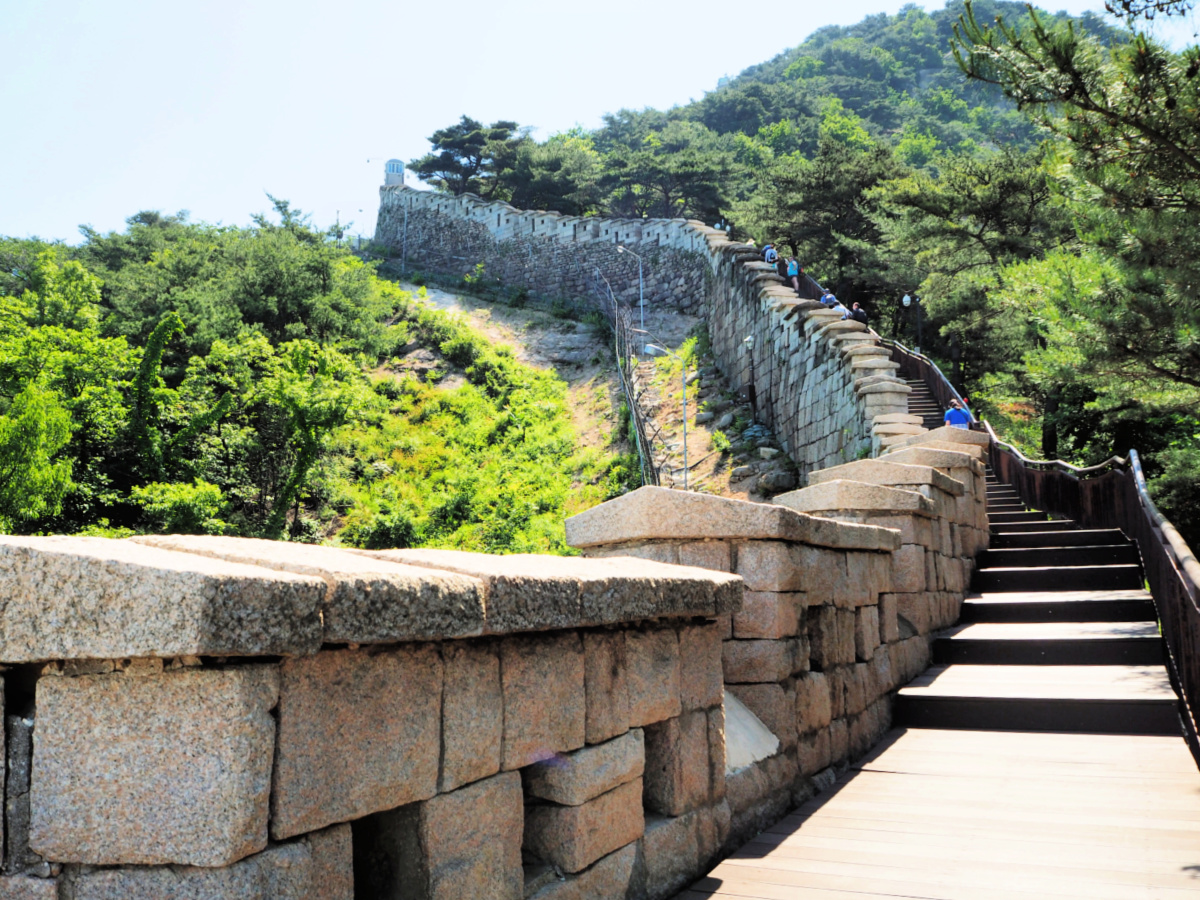 Part of the walls that surround ancient Seoul includes part of Bugaksan Mountain.
Part of the walls that surround ancient Seoul includes part of Bugaksan Mountain.Introduction
Welcome to Bugaksan Mountain, a majestic sentinel presiding over the bustling city of Seoul, South Korea.
A site of significant historical importance and natural beauty, Bugaksan, the northernmost of Seoul's four guardian mountains, boasts a fascinating fusion of cultural heritage and panoramic vistas.
One of Bugaksan's crowning jewels is the formidable Seoul Fortress Wall that snakes its way across the mountain's rugged terrain. Constructed in 1396 during the Joseon Dynasty, this ancient wall whispers tales of the city's vibrant past and resilient spirit.
The well-preserved wall segments testify to Korea's architectural genius, showcasing impressive stone masonry techniques that have withstood the test of time.
As you hike the trails of Bugaksan, expect breathtaking views at every turn. From the top, one can behold a stunning contrast between the city's sprawling urban skyline and serene mountain vistas.
Enveloped in a thick tapestry of green during summer and draped in a blanket of snow in winter, Bugaksan offers a tranquil retreat from the city's fast-paced rhythm.
Bugaksan Mountain and its walls are not just a hike; they are a journey through time and nature, an immersion into the heart of Seoul's history, and a testament to Korea's enduring spirit.
Bugaksan Mountain & Fortress Wall
If you are a nature enthusiast who loves hiking and exploring stunning landscapes while traveling, then Bugaksan should be on top of your list.
This majestic mountain range in northern Seoul is one of the city's most significant landmarks offering mesmerizing scenery, fresh air, and adventure.
Besides its remarkable history, Bugaksan is known for its well-established trails that allow hiking enthusiasts of all levels to get close to nature and experience panoramic views of the surrounding area. Join me as we uncover the mesmerizing allure of this hidden gem in Seoul.
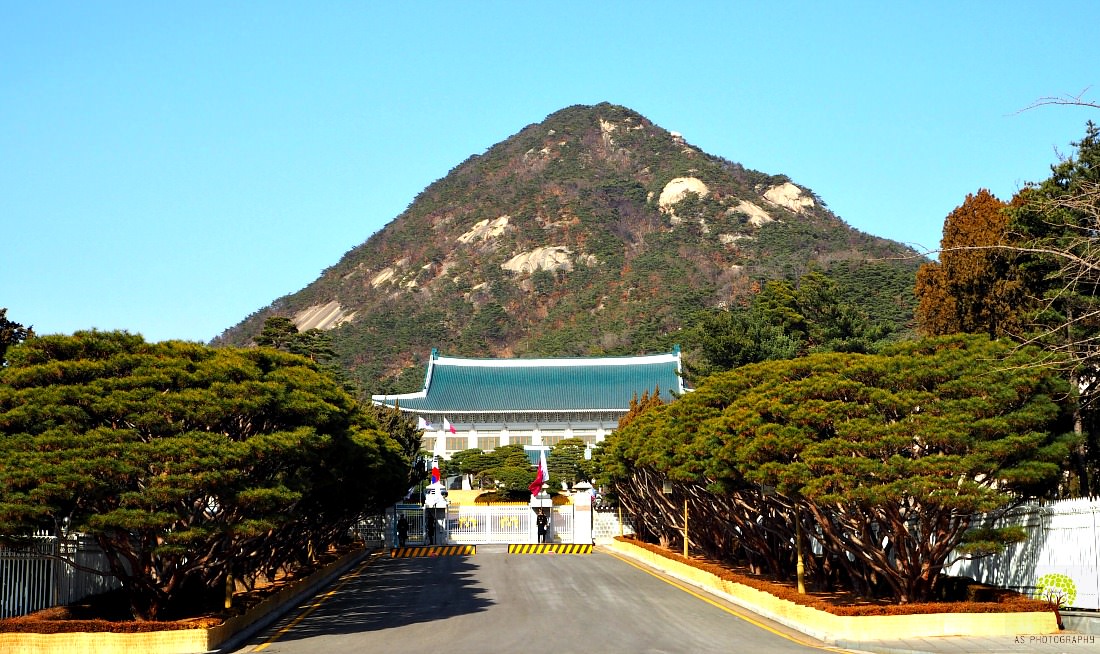 Part of Bugaksan Mountain and Fortress Wall can be seen just behind Cheongwadae (Blue House) - South Korea's Presidential House
Part of Bugaksan Mountain and Fortress Wall can be seen just behind Cheongwadae (Blue House) - South Korea's Presidential HouseDiscovering the trails:
Bugaksan boasts an extensive trail network that caters to everyone from leisurely strollers to seasoned hikers.
The hiking courses range from beginner-friendly courses like the Bugak Skyway and Mukjeongdae to challenging and scenic hikes like the Eunbong, Jeonggwanheon, and Changuimun Gates courses.
So whatever your fitness level, expect nothing short of breathtaking views, harmony, serenity, and tranquility as you venture across this natural wonderland.
Seoul's Best-Kept Secret:
Due to its strategic location adjacent to the North Korean border, the Bugaksan area was off-limits to hikers and tourists for decades, making it one of Seoul's best-kept secrets.
However, in 2007, the government opened the mountain to the public, allowing visitors to legally enjoy its natural beauty. Today, the mountain's rich culture, history, and panorama of the surrounding city make the site a must-visit attraction for any adventure enthusiast.
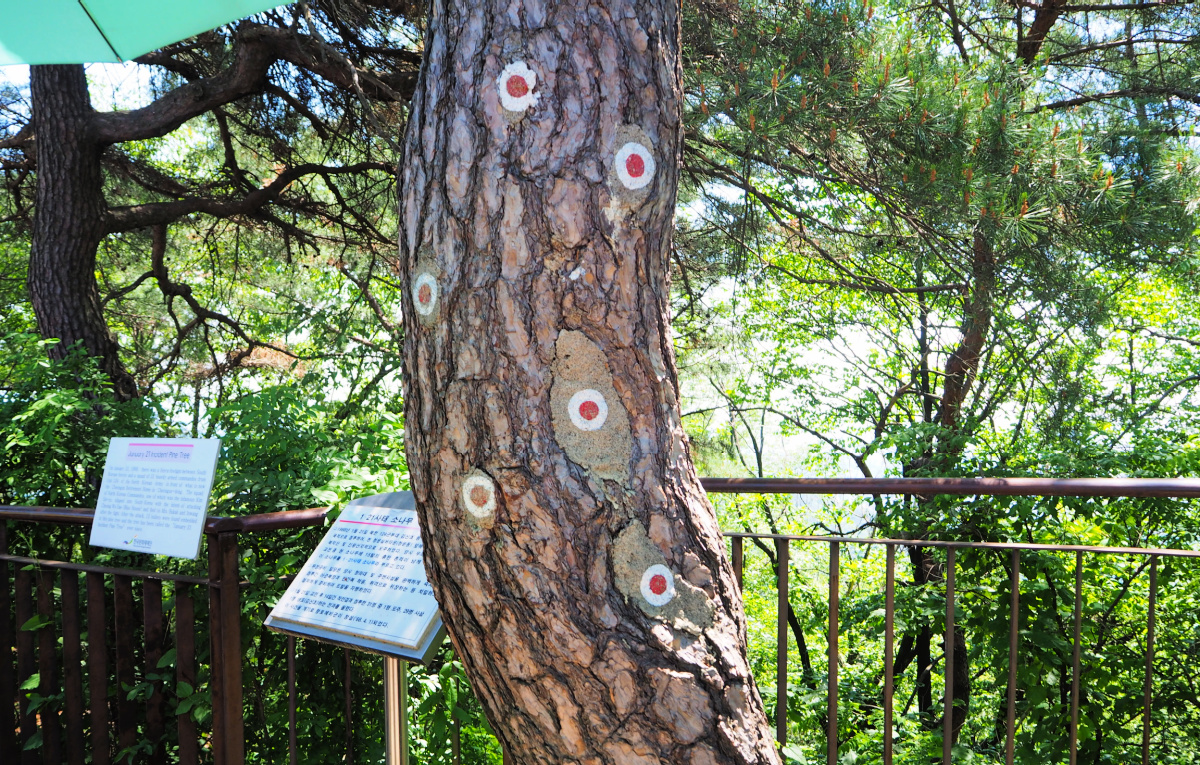 The red dots on the pine tree's bark are bullet holes as a result of an encounter between government troops against infiltrators that tried to attack the Blue House.
The red dots on the pine tree's bark are bullet holes as a result of an encounter between government troops against infiltrators that tried to attack the Blue House.Bugaksan has a vibrant and long history, stretching back thousands of years. The mountain served as a fortress for the nation during the Japanese invasions of Korea in the 16th century, and it played a significant role in defending against North Korean forces during the Korean War.
It was also here that former South Korean president Park Chung-hee declared martial law, leading to the 18 years of military-backed authoritarian rule that defined his legacy.
To this day, the mountain is a popular destination for patriotic Koreans who want to pay their respects and commemorate the area's history.
Experience a Vibrant Ecosystem:
Bugaksan is home to a vibrant array of natural wildlife and vegetation. As you explore the trails, you're bound to spot colorful birds, amphibians, reptiles, and various species of plants that are endemic to the mountain's unique landscape.
The area is also home to several endangered species, such as the white-naped crane, musk deer, leopard cat, and Amur falcon.
Preserving the ecosystem of Bugaksan?
The government of South Korea has taken numerous steps to protect the delicate ecosystem of Bugaksan. It established a protected area around the mountain in 1999 and has since adopted various laws and regulations for its conservation.
This includes banning hunting, logging, and other damaging activities on the mountain and implementing rigorous environmental management plans to ensure that all visitors to the mountain adhere to conservation regulations.
The government also works with local communities and organizations to spread awareness about the importance of preserving the area's ecosystem.
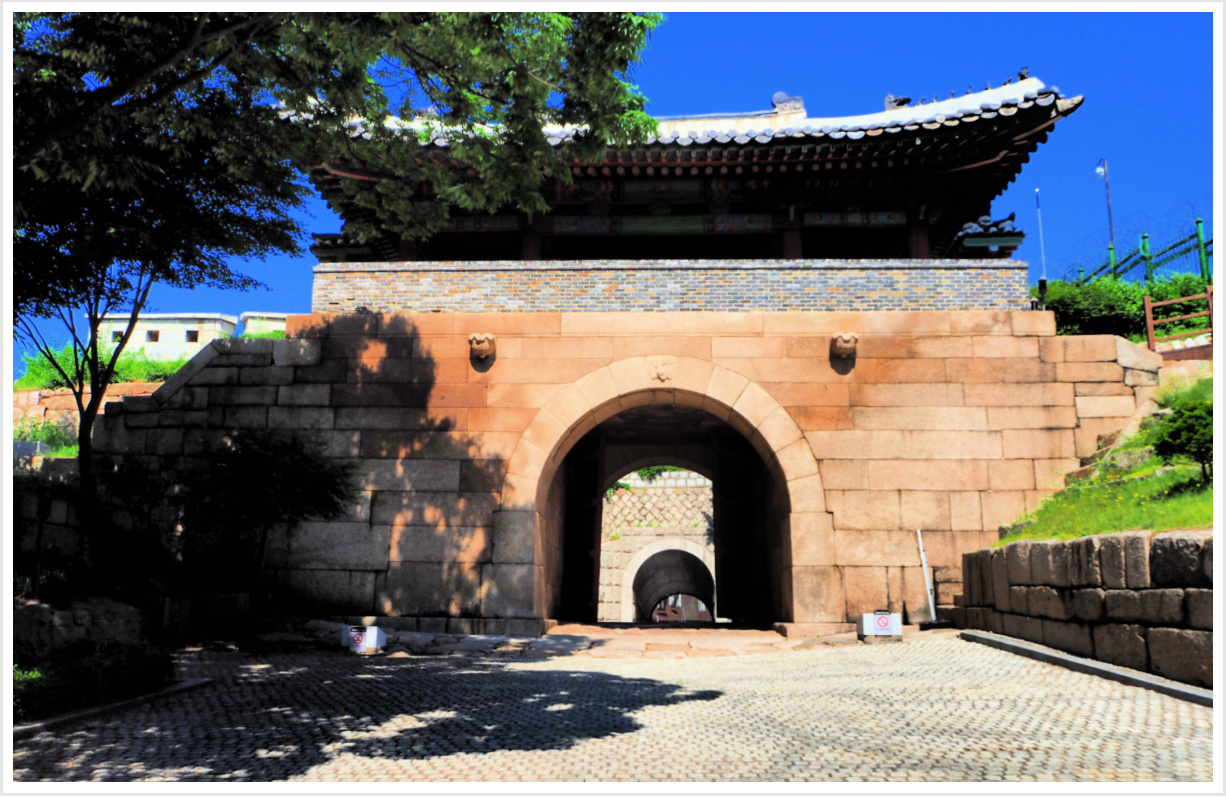 One of the smaller gates along the walls of Bugaksan Mountain
One of the smaller gates along the walls of Bugaksan MountainBugaksan Fortress Wall
Apart from its hiking trails, the mountain is renowned for the Bugaksan Fortress Wall, a 15-kilometer-long defensive rampart built during the Joseon Dynasty to protect Seoul from enemy forces in the north.
The wall features four gates, including Hyehwamun, Changuimun, Sukjeongmun, and Jahamun. If you are interested in Korean history, you should add this fortress wall to your itinerary.
The Four Walls
The four gates of the Bugaksan Fortress Wall were named after their respective locations and were built during the reign of King Sejong in the 15th century.
Hyehwamun is located at the wall's eastern end, Changuimun stands to the west, Sukjeongmun guards the southern side, and Jahamun stands at the far north.
Each gate was designed to be a formidable defense against enemy forces and was equipped with weaponry such as arrow slits, crossbow platforms, and gun ports. The walls also featured watchtowers that allowed guards to survey the surrounding area for potential threats.
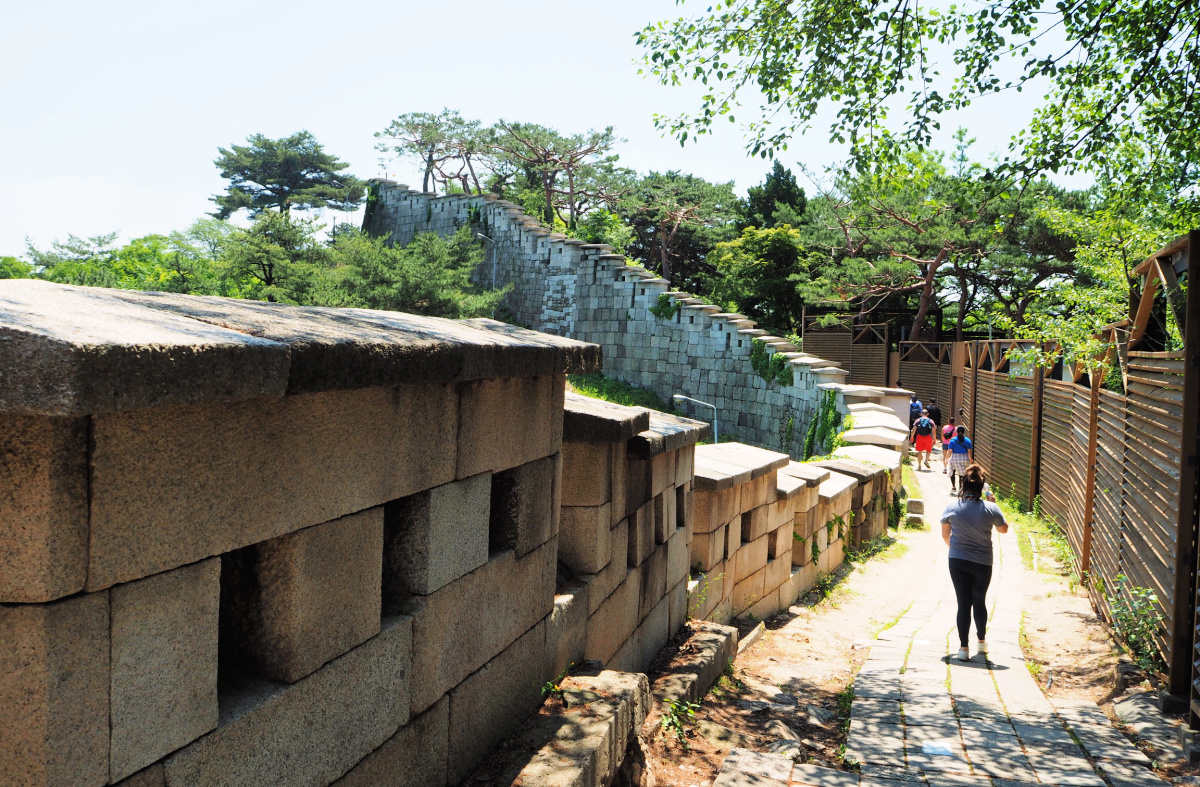 Fortress Wall along Bugaksan Mountain and some hikers
Fortress Wall along Bugaksan Mountain and some hikersIn short, Bugaksan Mountain is a treasure trove of cultural and natural beauty. From its extensive hiking trails to its impressive fortress wall, the area is packed with centuries-old wonders waiting to be explored. So what are you waiting for?
If you are planning on visiting Bugaksan, it's essential to dress appropriately, wear comfortable shoes, and pack essentials like sunscreen, a hat, and plenty of water.
Visitors must also prepare their identification and register their name, nationality, and mobile number at one of the park entrances to gain access.
Also, to enhance your traveling experience, you can opt to take an organized tour or hike with a certified guide to ensure that you get the best out of your trip.
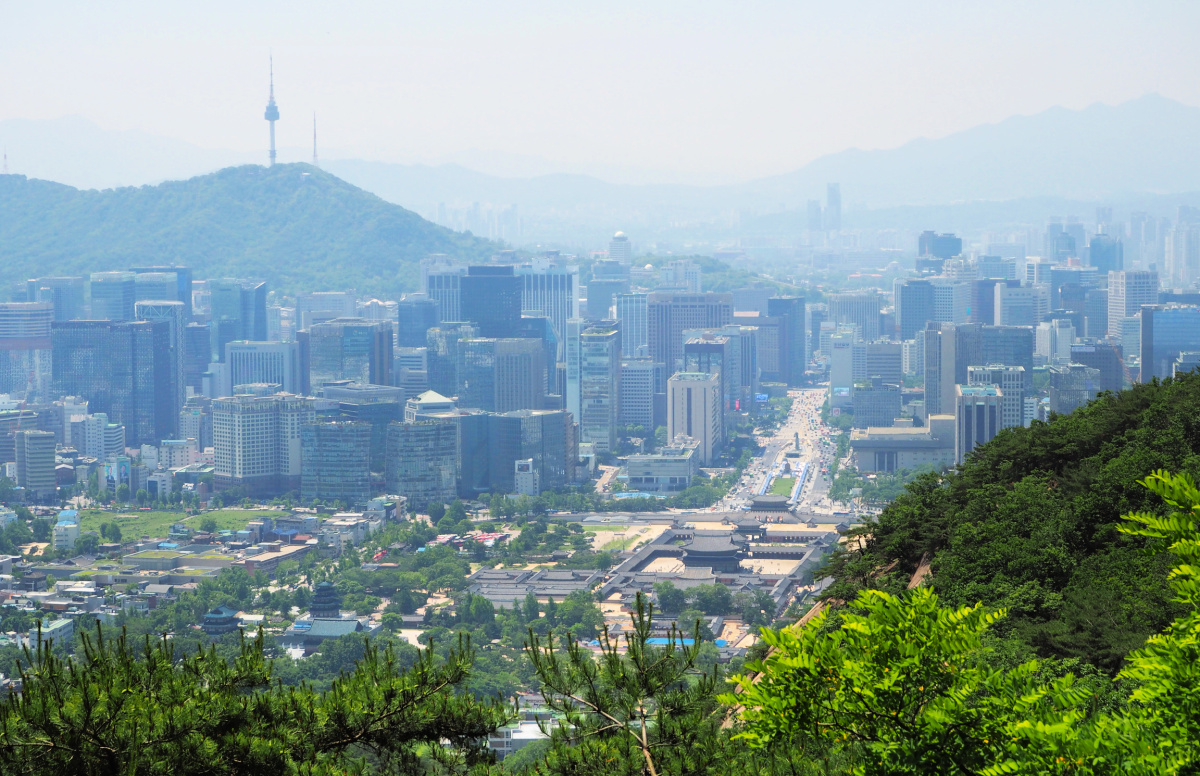 Gyeongbokgung Palace below and Namsan Tower and some of the landmarks one can quickly notice atop Bugaksan Mountain.
Gyeongbokgung Palace below and Namsan Tower and some of the landmarks one can quickly notice atop Bugaksan Mountain.Embrace the Culture and Natural Beauty
Bugaksan is a haven for hikers and nature lovers and a compelling destination for anyone looking for a unique cultural experience.
Along the trail, visitors can explore several cultural landmarks, such as the Presidential House, Moraenae Market, Bukak Skyway, and the nearby Naksan Park, which is renowned for its artificial waterfall and scenic pavilions.
The Presidential House is a historic building located on the mountain, which served as a temporary residence for former South Korean presidents.
Moraenae Market is situated at the foot of Bugaksan and has been operating since the Joseon Dynasty, offering visitors traditional snacks and souvenirs.
The Bukak Skyway is a 1 km-long road that provides a stunning view of the mountain and cityscape below.
Finally, Naksan Park is a popular destination for visitors, featuring an artificial waterfall, pavilions, and several historical monuments such as statues and stone carvings.
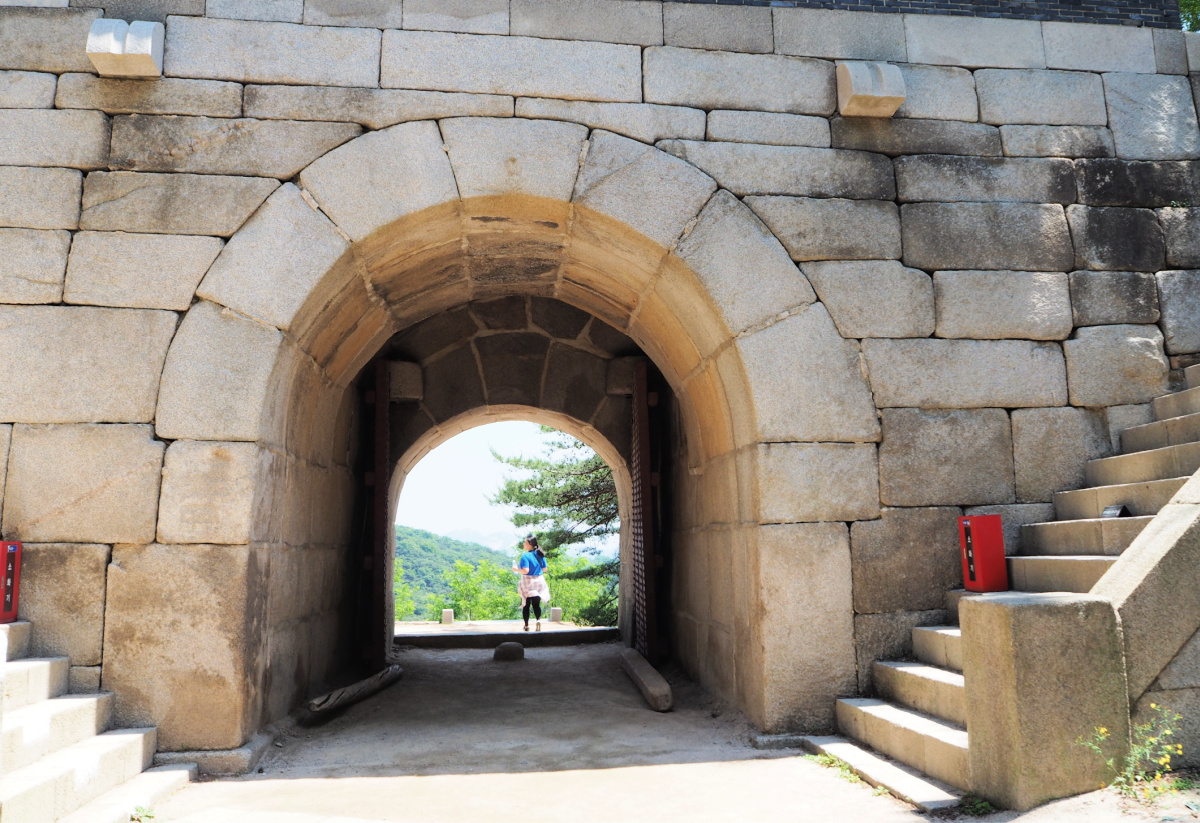 Seukjeongmun Gate of Bugaksan Mountain
Seukjeongmun Gate of Bugaksan MountainBest Time to Visit Bugaksan
The best time to visit Bugaksan depends on what you want to see and do. If you're interested in hiking and enjoying the scenic beauty of the mountain, then spring and autumn are great times to visit.
The weather is mild, and the foliage is beautiful. However, if you're interested in winter sports, then the winter months are the best time to visit. Whatever time of year you choose to visit, make sure to check the weather forecast and plan accordingly.
Different Seasons and Different Experiences
When planning a hiking trip to Bugaksan, it's essential to consider the season you'll be visiting. Each season brings a different experience to the mountain.
For example, during the fall season, the leaves on the trees change color and create beautiful scenery that visitors can enjoy while hiking. The cooler temperatures also make it a more comfortable experience for hikers.
It's important to note that during the winter, the trails may have snow or ice, making it more challenging to hike. Visitors should always check the weather forecast and trail conditions before embarking on a hiking trip to Bugaksan.
In summary, if you're dreaming of a nature adventure that combines hiking, culture, and history, then Bugaksan is the ultimate destination for you.
This hidden gem in the heart of Seoul is perfect for both solo travelers and adventurers seeking family fun. Whether you're new to hiking or a seasoned trekker, the extensive trail network caters to all.
So plan a trip to this mountain and unlock the unrivaled beauty, culture, and serenity that Bugaksan has to offer.
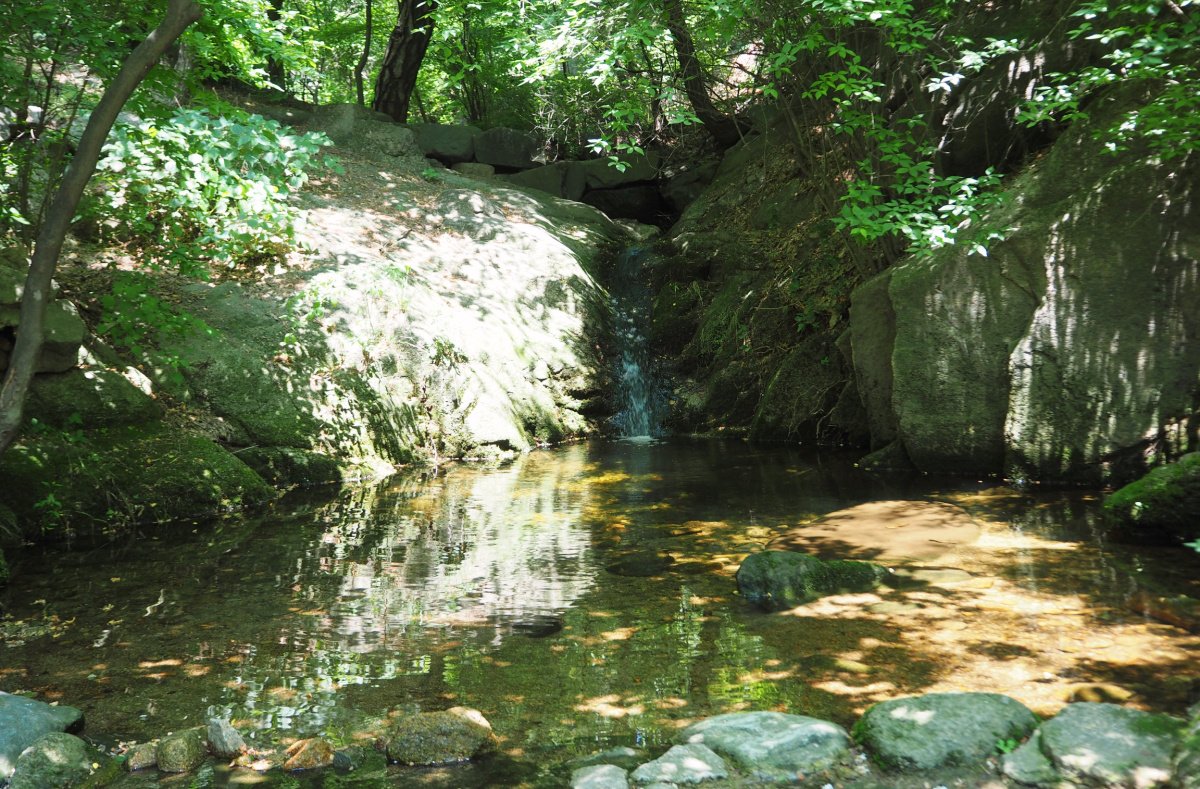 One of the many cool and natural streams one can find at Bugaksan Mountain
One of the many cool and natural streams one can find at Bugaksan MountainHow to Get to Bugaksan Entrance
To get to Bugaksan Mountain at its main entrance, take the subway Line 3 and get off at Gyeongbokgung Station. From there, take exit 3 and walk straight for about 10 minutes until you reach the ticket booth.
You'll need to show your ID or passport to purchase a ticket and then follow the signs to the entrance. Visiting early in the morning is recommended to avoid crowds and enjoy the beautiful scenery.
Have a great trip!
- Home
- Seoul Attractions Best
- Bugaksan Mountain Fortress Wall
Get Exciting Activities
Book one of our exciting activities today to experience the thrill of a lifetime! Take advantage of this opportunity and secure your spot in advance.
Hotel Map Guide
Find your affordable, accessible, and comfortable hotel in Seoul at Agoda.Com. See the hotel map below...
Hotel Booking Guide
Find affordable and amazing hotels on Agoda.com using the search box below. Book now to enjoy great discounts and save!
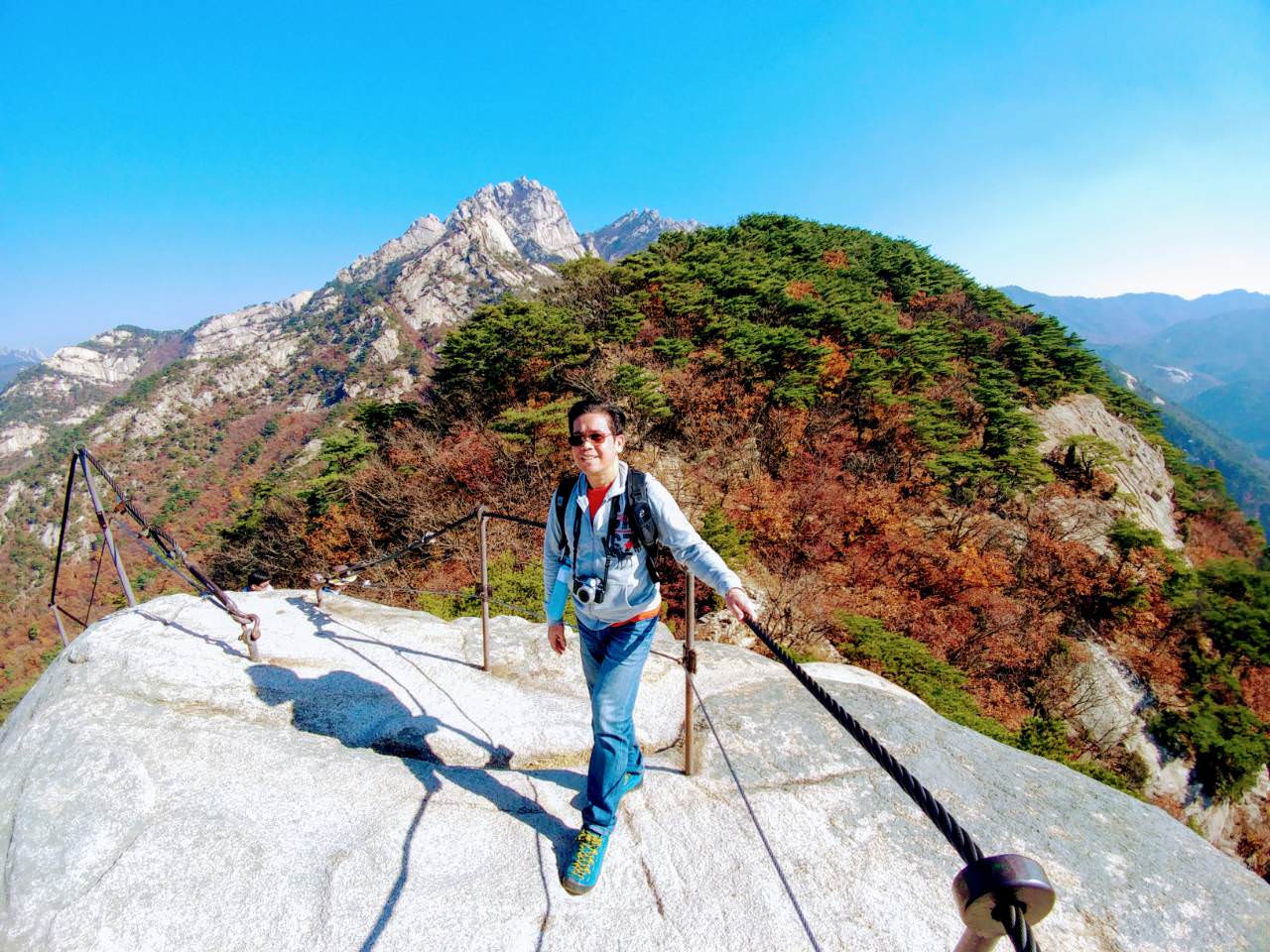
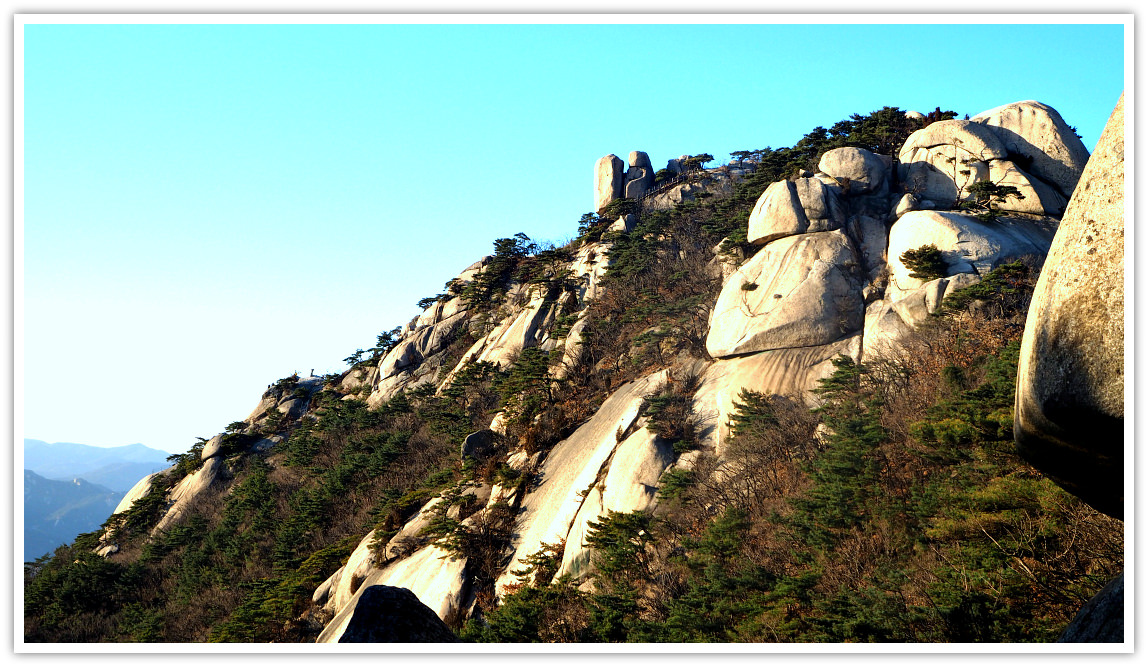
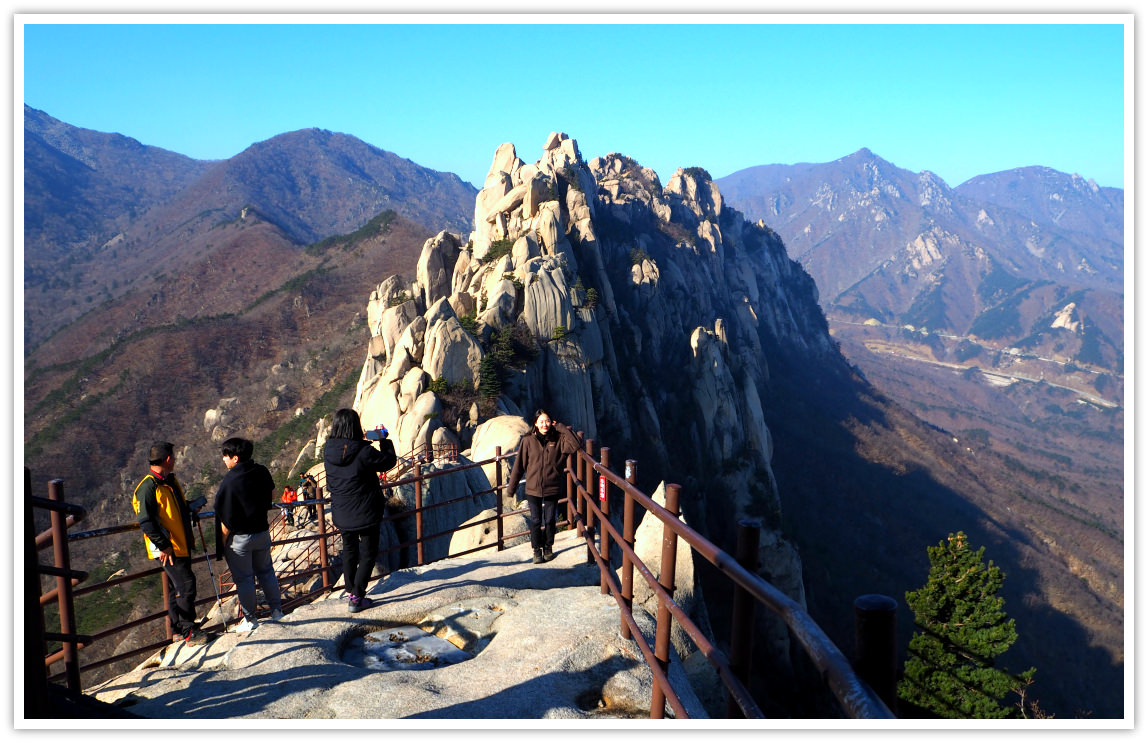




New! Comments
What do you think about this page? Leave me a comment in the box below.